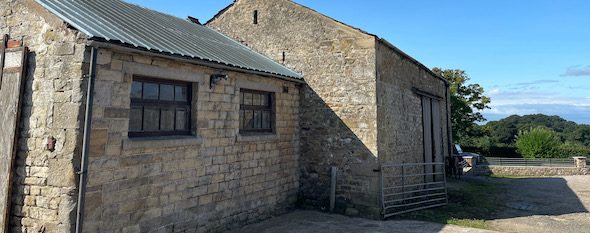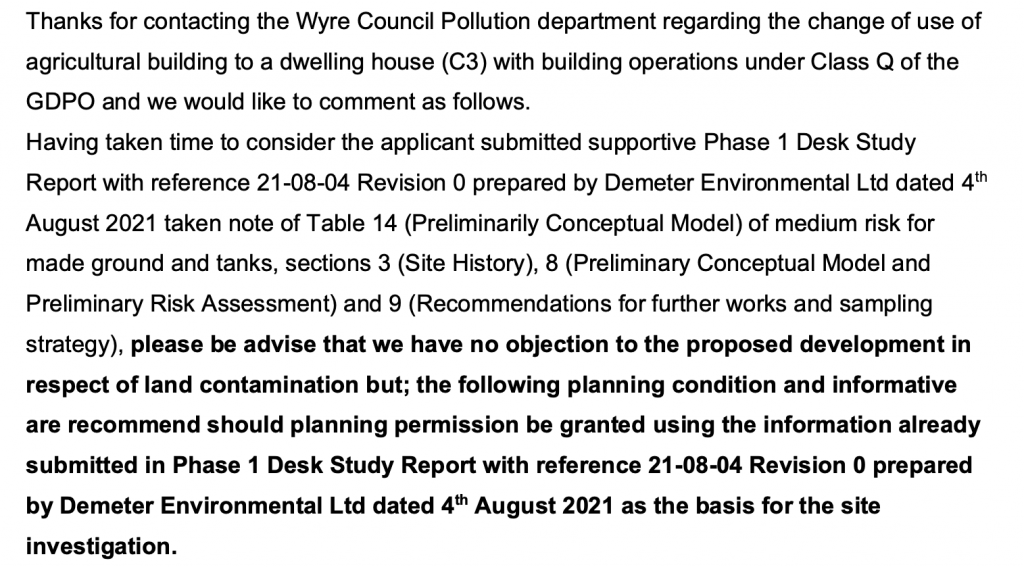Conversion Of An Agricultural Building To A Dwelling, Weavers Lane, Cabus, Preston, Lancashire, PR3
Case Study Reference: CS21-08-04
Planning Authority: Wyre Council
Planning Reference: Wyre Council and 21/01397/COUQ
Synopsis:
In order to demonstrate that after the development the site could not be classified as ‘contaminated land’ under Part 2A of the Environmental Protection Act a Phase I desk study report was required to support the application for the conversion of an agricultural building to a dwelling.
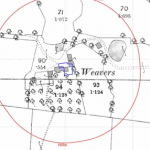 A Phase I desk study report assess the potential for a site to be impacted by contamination, this is undertaken by researching the history of the site and the surrounds as well as a review of information held by regulatory bodies and a site visit.
A Phase I desk study report assess the potential for a site to be impacted by contamination, this is undertaken by researching the history of the site and the surrounds as well as a review of information held by regulatory bodies and a site visit.
The history of the site and surrounds were researched using a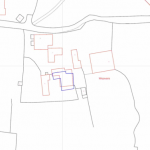 combination of Ordnance Survey (O.S.) maps, street level imagery and aerial plates. This revealed that ye site was initially developed prior to the 1890 map and by 1965 a second building had been erected, by 2000 the buildings had been extended to form a single building.
combination of Ordnance Survey (O.S.) maps, street level imagery and aerial plates. This revealed that ye site was initially developed prior to the 1890 map and by 1965 a second building had been erected, by 2000 the buildings had been extended to form a single building.
A pond was identified 15m north of the site on the 1890 map which was in-filled prior to the 1976 map.
Data provided by the Environment Agency identified a number of ponds within 250m of the site as well as a number of waste exception licenses for the site, which were for ‘Depositing waste from dredging inland waters, Burning waste in the open, aerobic composting and associated prior treatment, use of waste in construction, Spreading waste to benefit agricultural land, Using waste for a specified purpose’.
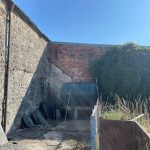 On completion of the desk based research a site reconnaissance
On completion of the desk based research a site reconnaissance 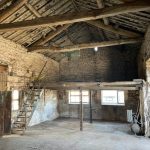 visit was undertaken to obtain further information on the potential sources of contamination, this revealed that the site . This confirmed the site was occupied by a single building with three rooms and was within a complex of farm buildings used to house livestock. A plastic double skinned fuel tank was noted on the site.
visit was undertaken to obtain further information on the potential sources of contamination, this revealed that the site . This confirmed the site was occupied by a single building with three rooms and was within a complex of farm buildings used to house livestock. A plastic double skinned fuel tank was noted on the site.
On completion of the walkover survey a qualitative risk assessment was undertaken on the potential sources of contamination identified in the desk study report in order to determine if any warranted further investigation, this concluded that the tank and the potential for the made ground on the site warranted further investigation.
The recommendations of the report were accepted and the works were conditioned and will be required once planning has been granted and before the commencement of the development.

